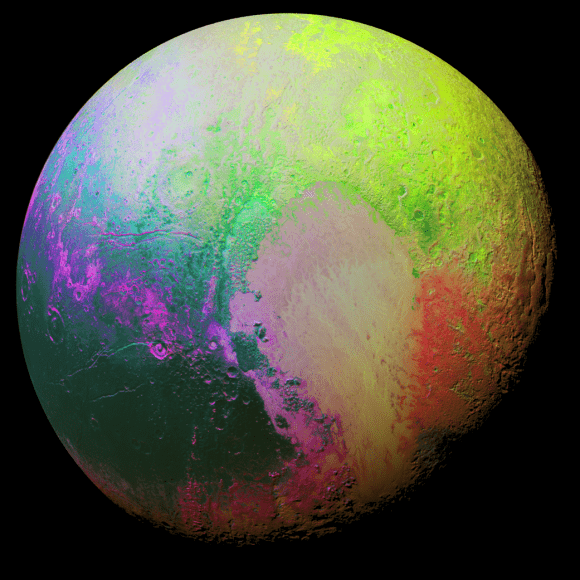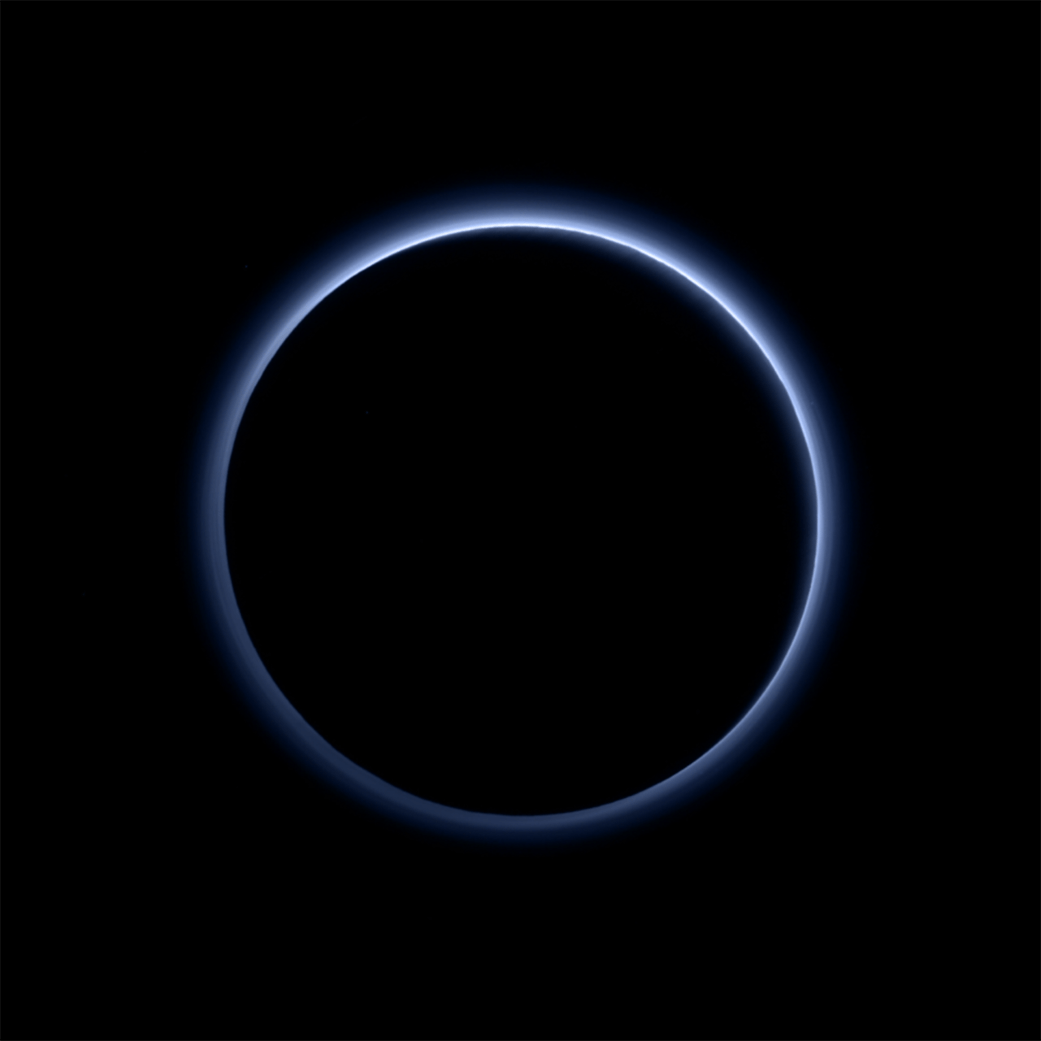The New Horizons team is releasing their first set of five research papers on Pluto and its moons. What the team is calling a “comprehensive set of papers” is the result of the New Horizons spacecraft’s close encounter with Pluto and its moons last summer. New Horizons has been transmitting data from the encounter that time, and will be sending data back for months to come.
We can tell from images that Pluto is not what we thought it was. Images and data show that Pluto is a much more active planet than we thought, and its surface shows a diversity of landscapes and geological processes. There’s been a lot of discussion about Pluto and its moons, and a lot of educated guesses about what’s going on there, but the 5 papers released by the team will take the discussion to a new level.
“These five detailed papers completely transform our view of Pluto – revealing the former ‘astronomer’s planet’ to be a real world with diverse and active geology, exotic surface chemistry, a complex atmosphere, puzzling interaction with the sun and an intriguing system of small moons,” said Alan Stern, New Horizons principal investigator from the Southwest Research Institute (SwRI), Boulder, Colorado.
The surface of Pluto is a constantly changing palette, shaped by the interactions between the volatile compounds nitrogen, methane, and carbon monoxide ices with the much sturdier and more predictable water ice. The evaporation and condensation of these compounds shapes the surface of Pluto. “These cycles are a lot richer than those on Earth, where there’s really only one material that condenses and evaporates – water,” said Will Grundy of the Lowell Observatory, Flagstaff, Arizona.

Images from New Horizons showed that Pluto’s moons are highly reflective, much more reflective than other bodies in the Kuiper Belt. This led scientists to believe that rather than being captured from the Kuiper Belt and drawn into orbit around Pluto, the moons may have been a result of a collision that formed the Pluto system.
The New Horizons team has found evidence to support this, and evidence that the surface ages of some moons are at least 4 billion years old. “These latter two results reinforce the hypothesis that the small moons formed in the aftermath of a collision that produced the Pluto-Charon binary system,” said Hal Weaver, New Horizons project scientist from the Johns Hopkins University Applied Physics Laboratory in Laurel, Maryland.
There’s a lot of material in these papers, and I direct interested readers to a summary here: Top New Horizons Findings.
The papers are published in Science.


Something that Pluto has done is redefine what too cold is for having active features. An interstellar rock could be very active. But instead of basalt or molten forms of rock showing activity, it frozen out gasses that are now liquids that are showing this activity. And as long as the temperature never reaches absolute zero, there is always a chance that some type of activity is occurring.
considering that the Moon needs above 2200 F (1204 C) to melt … I guess the Moon is from a composite relative point a lot colder than Pluto …
Need More Joules!!!!